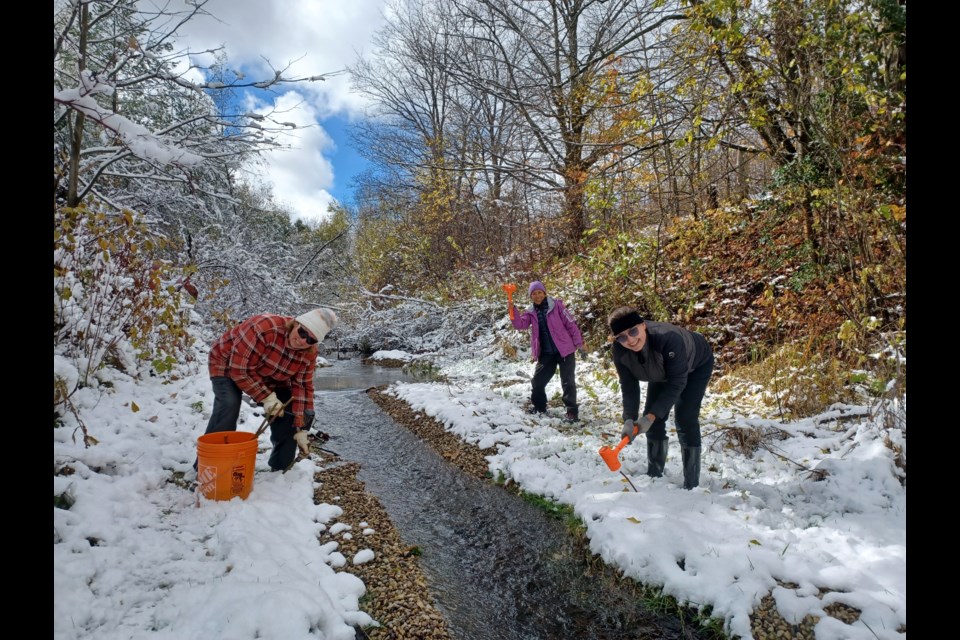It’s early morning with the sun still rising, dew on the grass and mist rising off the water.
A sudden splash, lightning-fast reflexes, and another brook trout gets pulled out of the stream. This fish is not destined for the dinner table — it will be counted, measured and weighed before being released back into the stream.
The Nottawasaga Valley Conservation Authority’s (NVCA) monitoring crew is conducting routine fish sampling of this elusive cold-water species. This work is part of the NVCA watershed science program’s efforts to track the health of sensitive river environments across the watershed.
The data show brook trout in the Nottawasaga River watershed are abundant in several areas, but overall, the number and quality of cold-water streams are decreasing. Similar results are being felt across southern Ontario, mainly due to the loss of natural habitat, a warming climate, and competition from non-native species all putting stress on brook trout populations.
In the Nottawasaga River watershed, one big culprit is the abundance of on-stream ponds in the Niagara Escarpment and our local moraines on small headwater creeks. These are man-made ponds that are directly connected to a stream. People often think damming and digging a small pond off a natural creek that runs through their property creates a little slice of nature in their backyard and improves the habitat. In reality, it is damaging to our remaining cold-water streams.
Native cold-water fish species, like brook trout, require these cold-water streams and are very sensitive to temperature change, and a small change of two to three Celsius can often limit local populations or eliminate them entirely. On-stream ponds slow the flow of water and increase the surface area of the waterways, allowing more sunlight to warm the water, increasing the temperature to up to 10 C. This can drastically affect the downstream environment that thrives in colder conditions. The dams built to create online ponds are barriers to fish migration, disrupting their ability to reproduce.
The construction of online ponds is regulated by the NVCA for the protection of groundwater resources and from river hazards, but this regulation has the added benefit of protecting these sensitive cold-water species. Contact the NVCA’s regulation program before you do any work around water to avoid causing further harm to our sensitive cold-water streams.
The NVCA’s stewardship program works with interested landowners to disconnect ponds from streams or to remove the unwanted dam associated with the pond. If you have an on-stream pond, you can help improve the fate of our remaining cold-water streams and the fish that live in them.
Fish community monitoring is just one of the various techniques the NVCA uses to score the health of the watershed’s forests, wetlands, rivers and groundwater. A lot of work goes on behind the scenes to ensure we collect and produce data of the highest quality grounded in science so the NVCA can protect these ecosystems. The results of this monitoring are shared with the public through our watershed health checks.
Visit nvca.on.ca/our-watershed to learn more about what the NVCA is doing to protect the Nottawasaga watershed and all the species that rely on it.
Ian Ockenden is the watershed science supervisor with the Nottawasaga Valley Conservation Authority.



